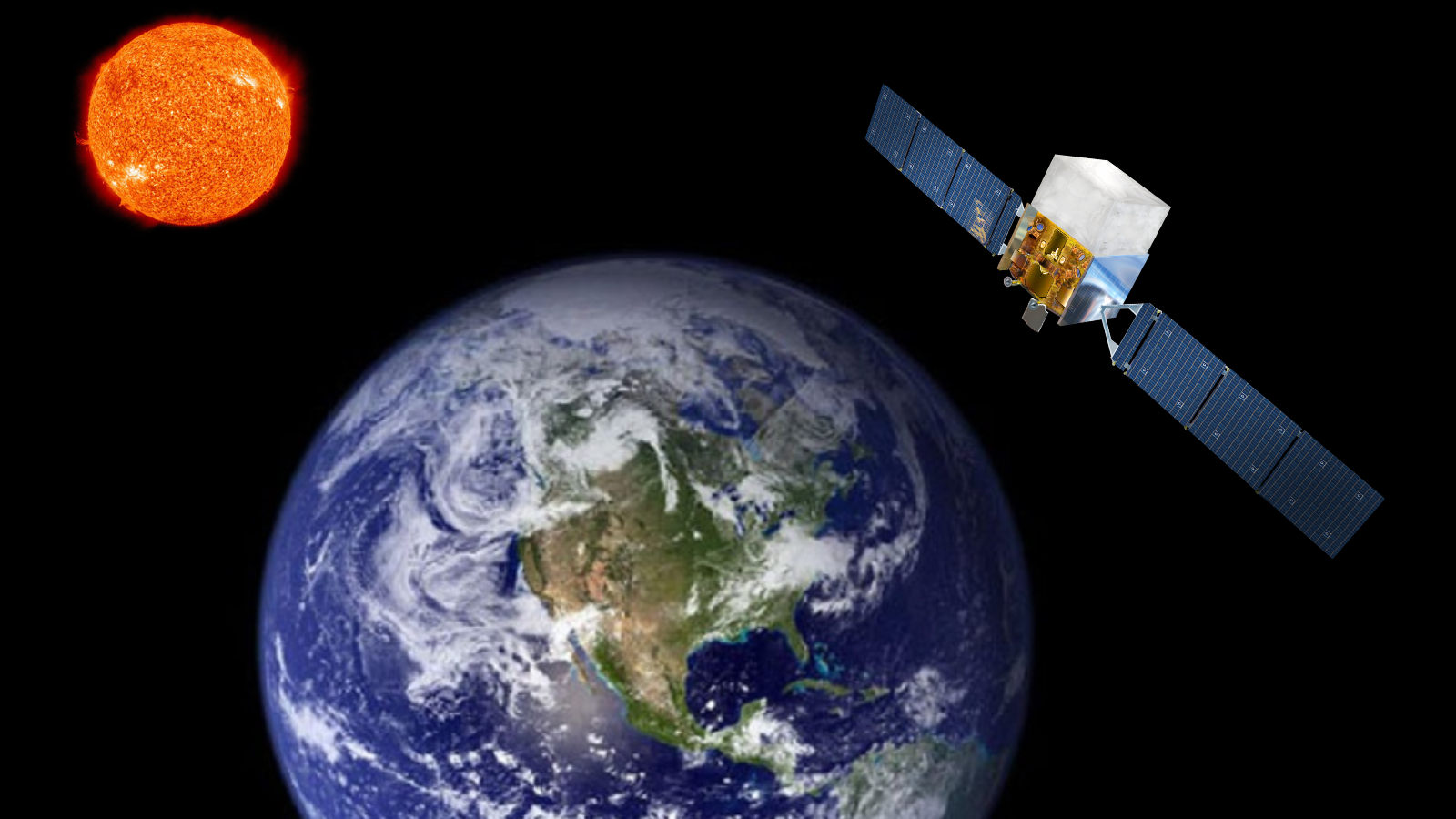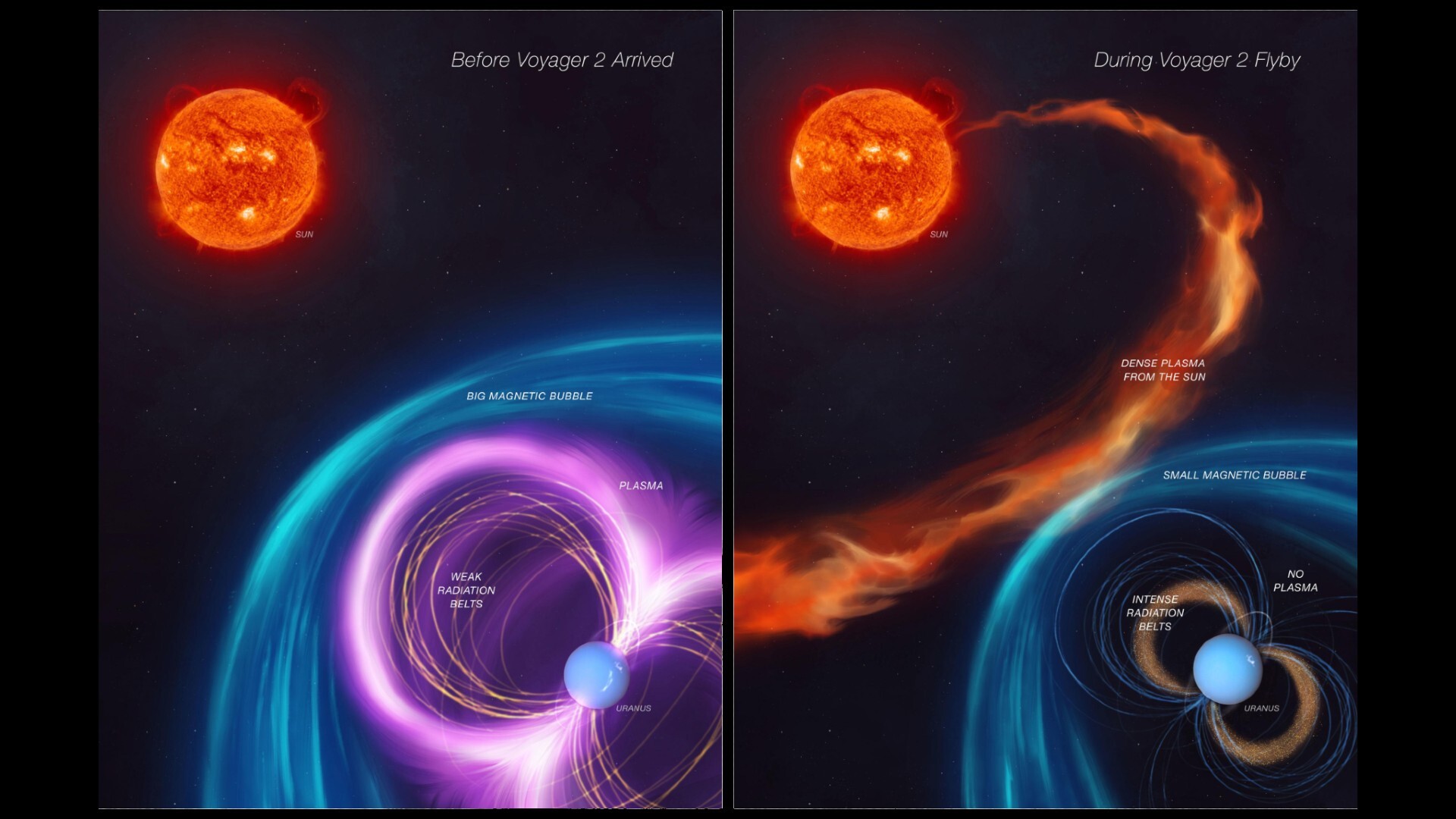Upcoming solar maximum may help solve the sun's gamma-ray puzzle
"Maybe there are additional mechanisms generating gamma rays that go beyond the interaction of cosmic rays with the surface of the sun."

If solar scientists aren't already eager to observe the sun as it reaches solar maximum in 2024, a newly discovered gamma-ray puzzle will intensify that desire.
While examining 14 years worth of data from NASA's Fermi space telescope, a team of researchers discovered that during the last solar maximum in 2013 and 2014, the polar regions of the sun blasted out high-energy gamma-ray radiation that was as much as 10 times higher than expected.
The sun is known to shine in all wavelengths of electromagnetic radiation, including gamma rays, but this was expected to be evenly distributed across the solar face. The team that detected high activity in the polar regions currently can't explain this imbalance.
"The study of gamma-ray emissions from the sun represents a new window to investigate and understand the physical processes that happen in the atmosphere of our star," team leader and Institute of Astrophysics and Space Sciences researcher Bruno Arsioli said in a statement.
"What are the processes that create these excesses at the poles? Maybe there are additional mechanisms generating gamma rays that go beyond the interaction of cosmic rays with the surface of the sun."
Related: Solar maximum will arrive sooner and last longer than previously expected, say scientists
Each solar cycle describes periodic changes in the sun's magnetic activity, lasting around 11.5 years and featuring a period of intense activity called solar maximum that sees more sunspots distributed across the sun's face, more solar flares, and more huge outflows of plasma called coronal mass ejections (CME).
Breaking space news, the latest updates on rocket launches, skywatching events and more!
The forthcoming solar maximum of the current solar cycle that began in Dec. 2019, , solar cycle 25, could help explain why the sun shined brighter in gamma rays at its poles during the peak activity of the last cycle.
Understanding the behavior of the sun at these maximums could help scientists better predict space weather driven by flares and outflows from the sun, which can disrupt power and communication infrastructures here on Earth as well as potentially damage satellites and threaten astronauts.
Observing a full solar cycle with NASA's Fermi space telescope
The data used by Arsioli and colleagues was collected by Fermi's gamma-ray catching instruments between August 2008 and January 2019, encompassing a full solar cycle from the solar minimum of one cycle through the solar maximum and to the solar minimum of the next.
To make sense of the data, the team created a tool that could disentangle gamma rays from the sun from this high-energy radiation from other sources in the background sky. This resulted in the integration of solar gamma-ray events into a window of 400 to 700 days, which can be slid across the 14-year period of observations to focus on gamma-ray activity at specific times.
Though the sun shines across all wavelengths of light, 99% of its light comes in the form of ultraviolet, visible, and infrared radiation. Much higher energy gamma-ray radiation emitted by our star comes from solar flares, the sun's corona, and, to a lesser extent, from the photosphere, which is loosely considered to be the sun's surface.
"The sun is stormed with close to light-speed particles coming from beyond our galaxy in all directions," team leader and Institute of Astrophysics and Space Sciences researcher Bruno Arsioli said in the statement. "These so-called cosmic rays are electrically charged and are deflected by the sun’s magnetic fields. Those that interact with the solar atmosphere produce a shower of gamma rays."
Scientists had theorized that these showers of gamma rays would be evenly produced across the sun. Contrary to this, the results from Arsioli and colleagues suggest that something is happening with the sun's magnetic field at higher altitudes that is intensifying gamma-ray output at the poles.
The researchers also detected another gamma-ray asymmetry, this time between the two poles and concerning the energy of gamma-ray photons produced.
"In the south pole, there is a surplus of emissions of higher energy, of photons with 20 to 150 gigaelectronvolts (GeV), while most of the less energetic photons come from the north pole," Arsioli added.
The gamma-ray emissions from the poles were particularly concentrated in June 2014, when the magnetic poles of the sun reversed, a phenomenon that happens every 11.5 years or so at the peak of solar maximum.
"We have found results that challenge our current understanding of the Sun and its environment," team member and University of Trieste scientist Elena Orlando said. "We demonstrated a strong correlation of the asymmetry in the solar gamma-ray emission in coincidence with the solar magnetic field flip, which has revealed a possible link among solar astronomy, particle physics, and plasma physics."
Understanding the connection between how and where the sun blasts out gamma rays and the activity of our star during periods of more frequent solar flares and CMEs could lead to better space weather forecasts.
"In 2024 and the next year, we will experience a new solar maximum, and another inversion of the sun’s magnetic poles has already started," Arsioli added. "We expect by the end of 2025 to reassess if the inversion of the magnetic fields is followed by a surplus in the gamma rays emissions from the poles."
Orlando also suggests that the team's findings present a strong case to pay more attention to gamma rays from the sun.
"We have found the key to unlock this mystery, which suggests the future directions that should be taken. It is fundamental that the Fermi telescope will operate and observe the sun in the coming years," she said.
"If it is settled that high energy emissions really carry information about the solar activity, then the next mission should be planned to provide real-time data on gamma-ray emissions from the sun," Arsioli concluded.
The team's research is published in The Astrophysical Journal.

Robert Lea is a science journalist in the U.K. whose articles have been published in Physics World, New Scientist, Astronomy Magazine, All About Space, Newsweek and ZME Science. He also writes about science communication for Elsevier and the European Journal of Physics. Rob holds a bachelor of science degree in physics and astronomy from the U.K.’s Open University. Follow him on Twitter @sciencef1rst.

